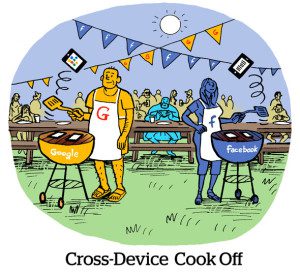The most important thing in advertising is the actual creative.
And major ad platforms are well on their way to an era of creative innovation. Actually, strike that. I meant creative desolation.
For example, consider two commercials that made the rounds on the socials this week. One is an ad for the city of Oslo, which scored points for its wry wit, and the other is a promo for Toys“R”Us that was produced by prompting Sora, OpenAI’s AI model for automatically generating realistic videos from text prompts.
To be fair, the Toys“R”Us ad is more of a PR gimmick than a real commercial. But considering this ad was the result of days of fine-tuning, with each frame selected from dozens of discarded alternatives along the way, it shows how far AI-generated content still is from approaching real creativity. And that’s for an ad that has no dialogue.
But the big ad platforms see it as a creative renaissance.
The auto-gen boom
Google took the plunge in late 2023 with the introduction of its first autogenerated creative tech for Performance Max (PMax). It was for basic depictions of product images with some text. Then, in February, Google launched its first auto-gen video ad tools, which, when you boil it down, is pretty much just animation with a little sound added to a product image.
Meta, meanwhile, more recently introduced an auto-generator for text and image ads, as did Amazon with a new suite of tools announced in Cannes last week. TikTok also used Cannes as an opportunity to launch a more ambitious stab at AI-generated ad creative, with humanish (emphasis on the “ish”) avatars of creators for sponsored product posts.
“TikTok ushers in a new era of creative bravery” is the actual press release headline.
Despite the ludicrous self-congratulations for its courage in releasing an AI-generated creative product – one, I’d argue, that’s clearly bound for disaster – TikTok didn’t build this for users or advertisers.
These are products built primarily for investors and shareholders, who are obsessed with AI right now, and not for the people meant to use them in their day-to-day work or for the consumers meant to experience the “creative.”
The performance angle
The demand for AI-generated ad creative comes mainly from two sources: small and local businesses and ecommerce or retail media advertisers.
SMBs get outsized value from automating away basic campaign production. A dental practice or local auto repair shop logging into Google Ads can easily prompt an image that looks like the product of a real photo shoot (or close enough).
And retail advertisers already have feeds of product images, promotional prices and descriptions, which is all the raw material Google or Amazon needs to autogenerate and test creative.
Unlike SMBs, big retail and ecommerce advertisers already spend a ton on campaign production. If a platform can cut some of those costs down to zero while delivering a baseline acceptable level of creative, it’s a compelling case for the CFO, if not the CMO.
The rising tide
But CMOs should be wary of any ad platform offering an easy button.
This is true of ad buying products like PMax – “Why spend so much time focusing on media buying? Let us take that off your hands.” – and it will be especially true of the creative easy buttons now being added to buying dashboards.
“Some creative jobs maybe will go away,” said OpenAI CTO Mira Murati last week during an interview hosted by Dartmouth Engineering. “But maybe they shouldn’t have been there in the first place — you know, if the content that comes out of it is not very high quality.”
 The irony is that products like OpenAI’s Sora and other AI-generated video tools fall woefully short on quality.
The irony is that products like OpenAI’s Sora and other AI-generated video tools fall woefully short on quality.
Sure, it’s kind of cool that the new Toys“R”Us spot was AI generated. But the boy featured in it is still off-putting in a way that clearly marks him as a product of AI, despite him having 10 fingers. The “camera” is also out of focus in parts and jostles strangely.
If this video was the work of a team of creative pros with a small group of actors at a live shoot, it would clearly have been a waste of time and money. Instead, the production team just burnt up some electricity, and OpenAI likely covered the bill for any data consumed, the only real cost aside from the agency folks who did the prompting.
This is why AI-generated creative will miss the mark, especially on social networks like Instagram, TikTok, Snapchat and YouTube, where individual creativity is the point. Or is supposed to be, rather.
It’s time to prepare ourselves for an era of uncanny valley mediocrity and sameness.
Even on LinkedIn, I’ve seen nearly word-for-word opening lines on many recap posts from people who attended Cannes. And when, a couple of weeks ago, Oracle Advertising announced plans to shut down, a deluge of LinkedIn posts appeared from people now looking for work – many of which used the same specific language.
What’s happening, I suspect, is that people are using the same suggested prompts when they write a post.
That may (sort of) work for LinkedIn, which is the social network equivalent of a spreadsheet.
But for advertisers trying to stand out in a crowd, there will be very tough choices ahead.
Because although autogenerated creative will likely deliver ROAS, it will not deliver creativity.















